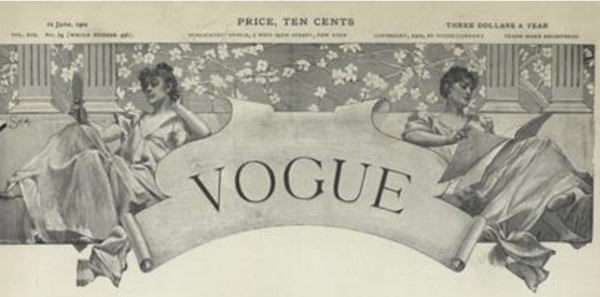Staff writer Claire Ducharme examines the recent French fast fashion bill and its implications on sustainability in the industry.
On 14 March 2024, France’s lower house of parliament approved a law that makes France the first country to limit the excesses of fast fashion through penalties on ultra-fast fashion products.
Kirsi Niinimäki, Associate Professor in Design at Aalto University and leader of the Fashion/Textiles Futures research group explains that fast fashion refers to, “a business model based on offering consumers frequent novelty in the form of low-priced, trend-led products.” It is made to replicate accelerated trends that last much shorter than the typical seasons associated with fashion.
These short trend cycles, commonly referred to as ‘micro trends’, produce low-priced items that pollute supply chain operations, encourage cheap and unethical manufacturing, frequent consumption, and short-lived garment use; embodying unsustainability itself.
The proposed law aims to address this by banning advertising such products and implementing a five euro surcharge per item with plans to increase penalties to 10 euros per individual item of clothing by 2030. The charge, however, cannot exceed more than 50 percent of an item’s price tag. Additionally, fast fashion producers will be forced to inform consumers about the environmental impact of their operations, creating a visible deterrent similar to the warning tobacco companies must place on their products in the European Union.
If the Senate is to vote for this law, precise criteria will be published in a decree, and the law will come into effect.
Protecting the planet or conserving the ‘chic’?
Recently, a fellow student privately expressed that France’s suggestion of this law has nothing to do with the environment or global sustainability and wellbeing, rather they believe that it’s more an act of self-preservation. Perhaps a sadistic and capitalistic move to reestablish the importance of expensive and high-end clothing, or a desperate reach to stay relevant in the world of fashion as French brands fall out of favor with fast fashion brands like H&M, Zara, Shein, and Temu taking the stage.
This raises the question: Is this law aimed at protecting the planet or at conserving the ‘chic’ appeal of French society and ‘mode’?
It is well known that France is often synonymous with concepts of luxury, art de vivre, and high artisanal know-how and quality. There is a “special relationship” that links the Frenc to fashion consisting of the fact that the French language and territory are deeply imbued by it.
The French Ministry of Culture does acknowledge these heartfelt connections and their own partiality towards the importance of French fashion, as they attach great importance to new generations of artisans and family businesses to be taken over by younger generations. This law could potentially help support these artisans as proceeds from the charge would be used to subsidize producers of sustainable clothes, allowing them to compete more easily in the current market.
The French high-end fashion industry is not in any grave danger, nor is France’s ‘chic’ reputation. On the contrary, France’s luxury fashion market is showing continuous growth.
The luxury fashion industry is still thriving as brands like Christian Dior, Coco Chanel, and Yves Saint Laurent continue to dazzle global audiences. Universities such as IFM, IFA, ESMOD, and ENSAD attract students from all over the world who are interested in helping create innovative pieces while preserving artisanal practices. In 2024, France was ranked as the most fashionable country in the world by CEOWORLD magazine, and popular series such as Netflix’s ‘Emily in Paris’ continue to paint Paris as the fashion capital of the world.
While it is clear such fast-fashion brands are taking over the lower end of the fashion market and this is a cause for concern, France still remains a central figure in the world of fashion as it has been for more than three centuries.
Huguette Tiegna, a deputy of the French National Assembly, believes that “fighting fast fashion means, first, protecting children living in other countries. It means preserving our biodiversity. It means preserving our French know-how. It means preserving our artisans who work day and night in our districts to create clothes that are sustainable and that comply with a minimum of environmental rules.”
While protecting artisans and French know-how is important and acknowledged, a big focus of this bill is environmental.
Environmental Concerns
David Amiel, also a deputy of the French National Assembly, vice-president of the Renaissance group, and a former policy adviser to President Emmanuel Macron provided ROAR with his outlook on the bill, which he voted in favor of:
« Les excès de la fast fashion incarnent toutes les dérives de la mondialisation, aussi bien environnementales que sociales. Le consommateur doit prendre conscience de l’impact de ses décisions, et la régulation publique, tant par les mécanismes de prix que d’information, est là pour lui permettre de le faire. »
David Amiel, Deputy of the French National Assembly
His statement can be translated as the following: The surplus of fast fashion embodies all the excesses/derailments of globalization, both environmental and social. Consumers need to be aware of the impact of their decisions, and public regulation through pricing mechanisms and information that are there to enable them to do so.
Amiel’s worry for the environment is not unfounded. Fast fashion accounts for 10% of global carbon dioxide emissions, ranking higher than emissions from air travel. It is a source of environmental hazards creating issues in water systems during production and use, whilst adversely impacting the health of animals and residents near production sites.
The fast fashion model encourages consumers to view clothing as disposable, leaving them to ignore the occupational hazards associated with their clothing, as well as the outcome of their clothing as they move onto their next ‘haul’. Low and middle-income countries ranging from Bangladesh to Brazil, unfairly bear the brunt of managing clothing waste, as wasted clothing becomes solid waste, clogging rivers, greenways and parks, and creating the potential for additional health hazards.
The environmental injustices created by fast fashion production and waste are not only seen from afar, they also impact our own local environmental systems. Microplastics from textiles are a major source of pollution, and fast fashion accounts for a particularly high level of microfibre release. An estimated 13,000 tonnes of textile microfibres, or 25 grammes per person, are released into surface water annually in Europe where the majority of homes are connected to a sewage and wastewater treatment system.
While long-term effects are still being researched, these microplastics can now be found in our food and water, believed to act as vectors for the spread of microbes and induce inflammatory reactions and toxicity.
Debates on Social Wellbeing
Amiel also referenced the social concerns associated with fast fashion. Social consequences can be seen in the countries producing the garments and managing the waste with issues like the exploitation of labor, violence against women, poverty, and public health crises.
Once again, these impacts can also be seen close to home. In France, the prêt-à-porter sector has numerous brands filing for bankruptcy, and small sustainable French businesses are not able to keep up. While the subsidies provided by the proceeds from this law will help French businesses, it will help producers of sustainable clothes affected by such monopolies and do not aim to make fashion inaccessible or purely ‘lux’.
Some, such as Philippe Moati, a professor of economics at Paris Cite University and the founder of Paris-based market research company ObSoCo, disagree with the government’s method. Moati feels that “the draft law stigmatizes these brands’ clients who, according to a study we are conducting, are the less educated and less well-off. It is important for them to be able to afford fashion to feel they are part of society.”
While Moati has a point, there is also a need to draw a distinction between generations, clients, and audiences. While certain clients may be as described, the main consumers actively targeted by fast fashion are younger generations, especially people aged 18–24.
Often those targeted by these advertisements and low prices are students raised with social media and influencer culture who feel the need to buy excessively. Additionally, fast fashion brands are not sympathetic entities who aim to democratise fashion by making it more affordable. The clothing is made of cheap material that forces the consumer to keep buying due to the lack of good quality. Fast fashion brands are focused on profit. By targeting young people, fast fashion brands know they have the ability to create a solid footing for themselves in future markets, and this law could slow that down.
Just like the European Union’s tobacco reduction initiative, this law is useful in making the products less appealing by informing consumers, decreasing advertisements, and imposing an increase on the price. Young people, who are in a position where they can replicate the problem in the future or begin societal detachment from it, are now allowed to look at clothing purchases more clearly.
While the bill was passed unanimously in the lower house of the French Parliament, it is now due to be voted on by the Senate. Few have hopes that the bill will be passed before parliament’s summer recess. If the law is instated, France has given their citizens knowledge of the implications of their consumption, and the opportunity to make an educated choice based on information rather than on targeted marketing to generate endless consumption and profit.
Hopefully, other countries will soon follow suit following the chic example set by France in order to protect the planet.

















